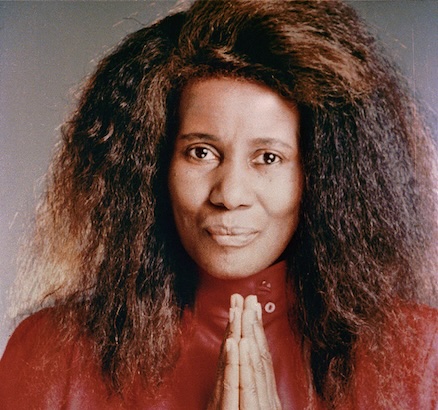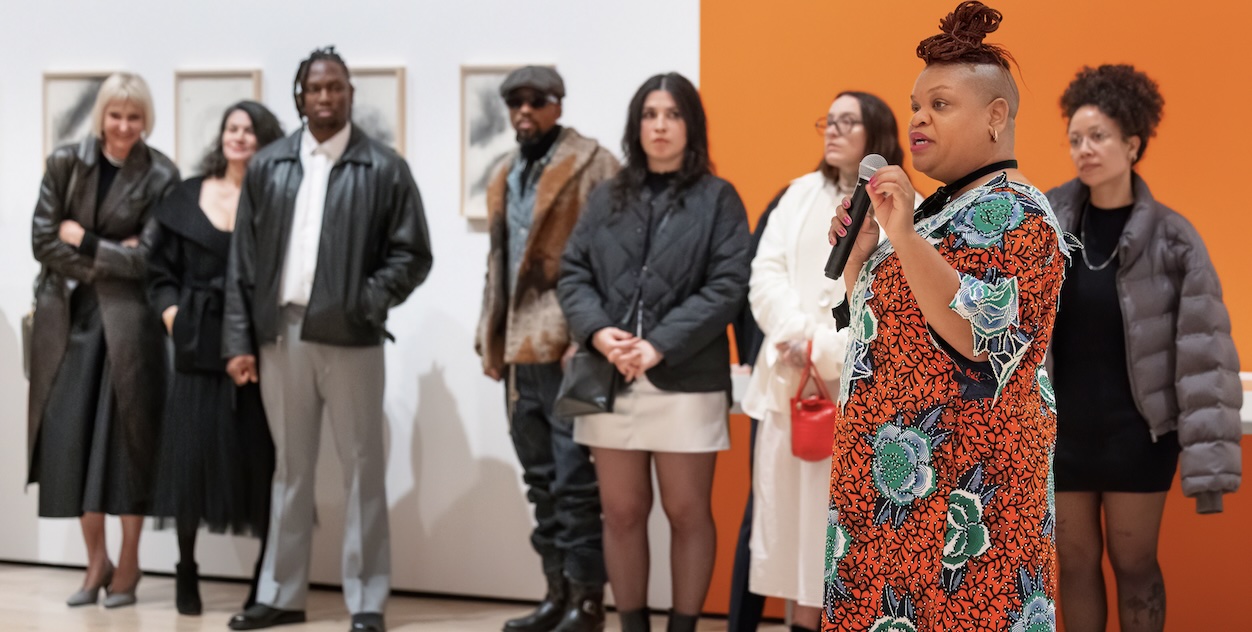
An exhibition at the Hammer Museum provides a look at the life and work of Alice Coltrane, wife of the legendary John Coltrane and a groundbreaking musician in her own right. From its opening day Feb. 9 to its last day on Sunday, May 4, “Alice Coltrane, Monument Eternal” presents the work of contemporary American artists and ephemera from Coltrane’s personal archives, including video, installation, and sculpture.
Her handwritten correspondence, unreleased audio recordings, and rarely seen video footage round out the exhibit, as well as a performance series featuring a handpicked array of artists and genres. This exhibition is part of a larger initiative called “The Year of Alice,” in partnership with the John & Alice Coltrane Home in New York.
A jazz pianist and harpist, devotional leader and mother, Alice Coltrane faced the early loss of her husband with a path to healing and self-discovery. She found solace in her discovery of Vedic Hinduism and founded her own ashram in California in 1975.
Erin Christovale, Hammer Museum curator, and Nyah Ginwright, curatorial assistant, worked with the John & Alice Coltrane Home to create “Monument Eternal.”

“The title refers to the first book that Alice wrote, published in 1977,” says Christovale. “It’s a short but very potent book about this moment shortly after John has passed away, and both the grief that she went through … but also this extremely transformational moment in her life where she really digs deep into a new spiritual pathway and ends up becoming a spiritual leader through the Vedic tradition, [under] the umbrella of Hinduism.”
Related Stories:
https://hammer.ucla.edu/exhibitions/2025/alice-coltrane-monument-eternal
https://thecoltranehome.org/year-of-alice/
https://channel.hammer.ucla.edu/video/1928/coltrane-on-coltrane-an-oral-history
The performance series, “Turiya Rising” takes place every Sunday during the run of the exhibit on a stage designed by artist GeoVanna Gonzalez, to honor Coltrane’s legacy as a musical innovator and her Sunday services at the Sai Anantam Ashram. Christovale worked with the Coltrane Home’s Ross Chait to create the lineup, which included Michelle Coltrane, Alice’s daughter and a jazz harpist.

Upcoming performers include A Call2Peace Ensemble (Mar. 9); drummer Gerry Gibbs (Mar. 16); guitarist Jeff Parker (Mar. 23); and sculptor and performance artist Devin T. Mays (Mar. 30). Jasper Marsalis, son of Wynton Marsalis, has his painting featured in “Monument Rising” and performed in the series under his musician name, Slauson Malone. Clips of past performances will be made available on the Hammer website.
“Being that [Alice] is mainly known as a musician and a jazz musician, it felt important to double down on any sort of musical programming that we could add to the contemporary artwork,” says Christovale.
The co-founder of the international experimental film program Black Radical Imagination, Christovale has been profiled by Time, Essence, and KCET, and her curatorial projects have been featured in Artforum, The New York Times and the Los Angeles Times. She says she was honored to work closely with the Coltrane Home and individuals who knew Alice Coltrane best.

“The family was ready to celebrate her in a public way, so they approached me about this exhibition, which in some ways is the bookend to the Year of Alice,” says Christovale. “It’s really exciting because they entrusted me with going through her archive and pulling out things I thought were important and should be shown.
“My main interlocutor was Michelle Coltrane,” she says. “I was able to talk to many family members. I was also able to talk to members of Alice’s ashram and fellow musicians who worked with her in the past. I had this incredible access, and I made sure that was all sort of expressed and felt throughout the exhibition.”
Christovale will present her curator’s talk on Sunday, May 4 at 1 p.m. A longtime fan of Alice Coltrane, she says it was important to her personally to take part in creating the exhibit.

“She is someone who has always considered the sonic and spiritual realm and how they come together,” says Christovale. “She grew up in the church and came into this other faith. Listening to her music is truly healing and it’s something I think all of us need right now, in this city, in this country. The timing of the show feels really fitting and I feel like people in the city are really responding to that.”
“Alice Coltrane, Monument Eternal” continues through Sunday, May 4. Admission to the exhibit and “Turiya Rising” performances is free. The events are not ticketed, but seating is limited and available on a first-come, first-served basis.

Self-parking is available under the museum; rates are $8 for the first three hours with museum validation, and $3 for each additional 20 minutes. An $8 flat rate is available after 5 p.m. on weekdays and all day on weekends. Parking entrances are located on the east side of Westwood Boulevard (northbound) or on the west side of Glendon Boulevard (southbound), between Wilshire Boulevard and Lindbrook Drive.
For more information on the exhibit and “Turiya Rising” performances, visit https://hammer.ucla.edu/exhibitions/2025/alice-coltrane-monument-eternal .




